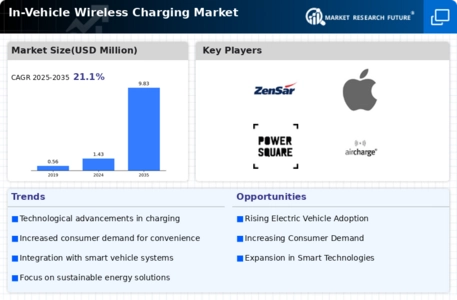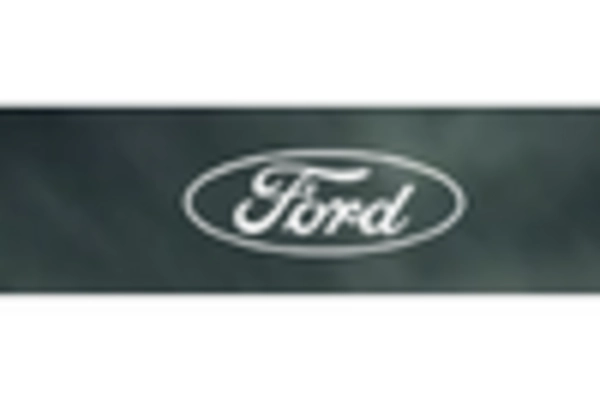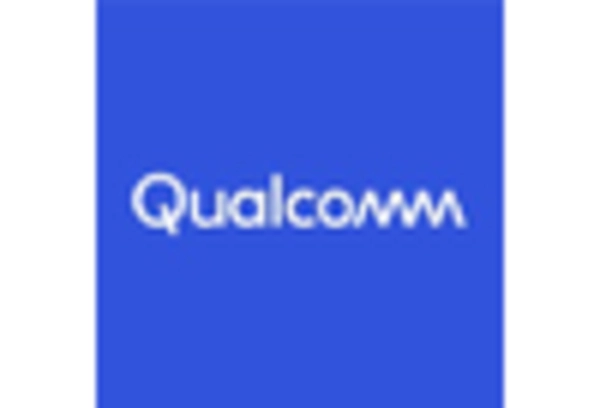-
Wireless Charging Market Size: Market Estimates & Forecast, By Luxury, 2019-2032
-
Standard/Regular
-
Global In-Vehicle Wireless Charging Market Size: Market
-
Estimates & Forecast, By Standard/Regular, 2019-2032
-
Global In-Vehicle
-
Wireless Charging Market, by Application (USD MILLION)
-
Introduction
-
OEM
-
Global In-Vehicle Wireless Charging Market Size: Market Estimates & Forecast,
-
By OEM, 2019-2032
-
Aftermarket
-
Global In-Vehicle Wireless Charging Market
-
Size: Market Estimates & Forecast, By Aftermarket, 2019-2032
-
Global In-Vehicle
-
Wireless Charging Market, by Vehicle Type (USD MILLION)
-
Introduction
-
Passenger
-
Vehicle
-
Global In-Vehicle Wireless Charging Market Size: Market Estimates &
-
Forecast, By Passenger Vehicle, 2019-2032
-
Commercial Vehicle
-
Global In-Vehicle
-
Wireless Charging Market Size: Market Estimates & Forecast, By Commercial Vehicle,
-
Global In-Vehicle Wireless Charging Market, by Region (USD MILLION)
-
Introduction
-
North America
-
North America In-Vehicle Wireless Charging
-
Market Size: Market Estimates & Forecast, By Country, 2019-2032
-
North America
-
In-Vehicle Wireless Charging Market Size: Market Estimates & Forecast, By Vehicle
-
category, 2019-2032
-
North America In-Vehicle Wireless Charging Market Size:
-
Market Estimates & Forecast, By Application, 2019-2032
-
North America In-Vehicle
-
Wireless Charging Market Size: Market Estimates & Forecast, By Vehicle Type,
-
US
-
US In-Vehicle Wireless Charging Market Size: Market Estimates
-
& Forecast, By Country, 2019-2032
-
US In-Vehicle Wireless Charging Market
-
Size: Market Estimates & Forecast, By Vehicle category, 2019-2032
-
US In-Vehicle
-
Wireless Charging Market Size: Market Estimates & Forecast, By Application,
-
US In-Vehicle Wireless Charging Market Size: Market Estimates &
-
Forecast, By Vehicle Type, 2019-2032
-
Canada
-
Canada In-Vehicle Wireless
-
Charging Market Size: Market Estimates & Forecast, By Vehicle category, 2019-2032
-
Canada In-Vehicle Wireless Charging Market Size: Market Estimates & Forecast,
-
By Application, 2019-2032
-
Canada In-Vehicle Wireless Charging Market Size:
-
Market Estimates & Forecast, By Vehicle Type, 2019-2032
-
Europe
-
Europe
-
In-Vehicle Wireless Charging Market Size: Market Estimates & Forecast, By Vehicle
-
category, 2019-2032
-
Europe In-Vehicle Wireless Charging Market Size: Market
-
Estimates & Forecast, By Application, 2019-2032
-
Europe In-Vehicle Wireless
-
Charging Market Size: Market Estimates & Forecast, By Vehicle Type, 2019-2032
-
Germany
-
Germany In-Vehicle Wireless Charging Market Size: Market Estimates
-
& Forecast, By Vehicle category, 2019-2032
-
Germany In-Vehicle Wireless
-
Charging Market Size: Market Estimates & Forecast, By Application, 2019-2032
-
Germany In-Vehicle Wireless Charging Market Size: Market Estimates & Forecast,
-
By Vehicle Type, 2019-2032
-
France
-
France In-Vehicle Wireless Charging
-
Market Size: Market Estimates & Forecast, By Vehicle category, 2019-2032
-
France In-Vehicle Wireless Charging Market Size: Market Estimates & Forecast,
-
By Tretment, 2019-2032
-
France In-Vehicle Wireless Charging Market Size: Market
-
Estimates & Forecast, By Vehicle Type, 2019-2032
-
UK
-
UK In-Vehicle
-
Wireless Charging Market Size: Market Estimates & Forecast, By Vehicle category,
-
UK In-Vehicle Wireless Charging Market Size: Market Estimates &
-
Forecast, By Application, 2019-2032
-
UK In-Vehicle Wireless Charging Market
-
Size: Market Estimates & Forecast, By Vehicle Type, 2019-2032
-
Spain
-
Spain In-Vehicle Wireless Charging Market Size: Market Estimates & Forecast,
-
By Vehicle category, 2019-2032
-
Spain In-Vehicle Wireless Charging Market Size:
-
Market Estimates & Forecast, By Application, 2019-2032
-
Spain In-Vehicle
-
Wireless Charging Market Size: Market Estimates & Forecast, By Vehicle Type,
-
Italy
-
Italy In-Vehicle Wireless Charging Market Size: Market
-
Estimates & Forecast, By Vehicle category, 2019-2032
-
Italy In-Vehicle Wireless
-
Charging Market Size: Market Estimates & Forecast, By Tretament, 2019-2032
-
Italy In-Vehicle Wireless Charging Market Size: Market Estimates & Forecast,
-
By Vehicle Type, 2019-2032
-
Rest of Europe
-
Rest of Europe In-Vehicle Wireless
-
Charging Market Size: Market Estimates & Forecast, By Vehicle category, 2019-2032
-
Rest of Europe In-Vehicle Wireless Charging Market Size: Market Estimates &
-
Forecast, By Application, 2019-2032
-
Rest of Europe In-Vehicle Wireless Charging
-
Market Size: Market Estimates & Forecast, By Vehicle Type, 2019-2032
-
Asia-Pacific
-
Asia-Pacific In-Vehicle Wireless Charging Market Size: Market Estimates &
-
Forecast, By Country, 2019-2032
-
Asia Pacific In-Vehicle Wireless Charging Market
-
Size: Market Estimates & Forecast, By Vehicle category, 2019-2032
-
Asia
-
Pacific In-Vehicle Wireless Charging Market Size: Market Estimates & Forecast,
-
By Application, 2019-2032
-
Asia Pacific In-Vehicle Wireless Charging Market
-
Size: Market Estimates & Forecast, By Vehicle Type, 2019-2032
-
China
-
China In-Vehicle Wireless Charging Market Size: Market Estimates & Forecast,
-
By Vehicle category, 2019-2032
-
China In-Vehicle Wireless Charging Market Size:
-
Market Estimates & Forecast, By Application, 2019-2032
-
China In-Vehicle
-
Wireless Charging Market Size: Market Estimates & Forecast, By Vehicle Type,
-
India
-
India In-Vehicle Wireless Charging Market Size: Market
-
Estimates & Forecast, By Vehicle category, 2019-2032
-
India In-Vehicle Wireless
-
Charging Market Size: Market Estimates & Forecast, By Tretment, 2019-2032
-
India In-Vehicle Wireless Charging Market Size: Market Estimates & Forecast,
-
By Vehicle Type, 2019-2032
-
Japan
-
Japan In-Vehicle Wireless Charging Market
-
Size: Market Estimates & Forecast, By Vehicle category, 2019-2032
-
Japan
-
In-Vehicle Wireless Charging Market Size: Market Estimates & Forecast, By Application,
-
Japan In-Vehicle Wireless Charging Market Size: Market Estimates
-
& Forecast, By Vehicle Type, 2019-2032
-
South Korea
-
South Korea In-Vehicle
-
Wireless Charging Market Size: Market Estimates & Forecast, By Vehicle category,
-
South Korea In-Vehicle Wireless Charging Market Size: Market Estimates
-
& Forecast, By Application, 2019-2032
-
South Korea In-Vehicle Wireless Charging
-
Market Size: Market Estimates & Forecast, By Vehicle Type, 2019-2032
-
Rest
-
of Asia-Pacific
-
Rest of Asia Pacific In-Vehicle Wireless Charging Market Size:
-
Market Estimates & Forecast, By Vehicle category, 2019-2032
-
Rest of Asia
-
Pacific In-Vehicle Wireless Charging Market Size: Market Estimates & Forecast,
-
By Application, 2019-2032
-
Rest of Asia Pacific In-Vehicle Wireless Charging
-
Market Size: Market Estimates & Forecast, By Vehicle Type, 2019-2032
-
Rest
-
of the world
-
Middle East & Africa
-
Middl East and Africa In-Vehicle
-
Wireless Charging Market Size: Market Estimates & Forecast, By Vehicle category,
-
Middl East and Africa In-Vehicle Wireless Charging Market Size: Market
-
Estimates & Forecast, By Application, 2019-2032
-
Middl East and Africa In-Vehicle
-
Wireless Charging Market Size: Market Estimates & Forecast, By Vehicle Type,
-
South America
-
South America In-Vehicle Wireless Charging Market
-
Size: Market Estimates & Forecast, By Vehicle category, 2019-2032
-
South
-
America In-Vehicle Wireless Charging Market Size: Market Estimates & Forecast,
-
By Application, 2019-2032
-
South America In-Vehicle Wireless Charging Market
-
Size: Market Estimates & Forecast, By Vehicle Type, 2019-2032
-
SECTION V:
-
COMPETITIVE ANALYSIS
-
Competitive Landscape
-
Introduction
-
Competition
-
Dashboard
-
Company Market Share Analysis, 2022-23 (%)
-
Competitive Benchmarking
-
The Leading Player in terms of Number of Developments in the Global In-Vehicle
-
Wireless Charging Market
-
List of Key Players, By Region
-
Public Players
-
Stock Summary
-
Comparative Analysis: Key Players Financial
-
Key Developments
-
& Growth Strategies
-
New Product Launch/Service Deployment
-
Merger &
-
Acquisition
-
Joint Ventures
-
Company Profiles
-
Hella KGaA Hueck &
-
Co
-
Company Overview
-
Financial Overview
-
Product Offered
-
Key Developments
-
SWOT Analysis
-
Key Strategies
-
Samsung Electronics Co., Ltd
-
Company
-
Overview
-
Financial Overview
-
Product Offered
-
Key Developments
-
SWOT
-
Analysis
-
Key Strategies
-
ZENS
-
Company Overview
-
Financial Overview
-
Product Offered
-
Key Developments
-
SWOT Analysis
-
Key Strategies
-
Infineon Technologies AG
-
Company Overview
-
Financial Overview
-
Product
-
Offered
-
Key Developments
-
SWOT Analysis
-
Key Strategies
-
Powermat
-
Technologies Ltd.
-
Company Overview
-
Financial Overview
-
Product Offered
-
Key Developments
-
SWOT Analysis
-
Key Strategies
-
Qualcomm Technologies,
-
Inc.
-
Company Overview
-
Financial Overview
-
Product Offered
-
Key
-
Developments
-
SWOT Analysis
-
Key Strategies
-
Apple Inc.
-
Company Overview
-
Financial Overview
-
Product Offered
-
Key Developments
-
SWOT Analysis
-
Key Strategies
-
Mojo Mobility, Inc.
-
Company Overview
-
Financial Overview
-
Product Offered
-
Key Developments
-
SWOT Analysis
-
Key Strategies
-
PowerSquare
-
Company Overview
-
Financial Overview
-
Product Offered
-
Key Developments
-
SWOT Analysis
-
Key Strategies
-
Aircharge
-
Company Overview
-
Financial Overview
-
Product Offered
-
Key Developments
-
SWOT Analysis
-
Key Strategies
-
Recommendations &
-
Expert Insights
-
What is the short-term vs long-term outlook for In-Vehicle
-
Wireless Chargings Market?
-
Who are the players to look out for?
-
What
-
will the Product mix look in coming years?
-
MRFR Offerings & Team
-
Citations
-
& Media
-
Our Regional Representatives
-
Related Reports
-
Our Domain
-
Coverage
-
NOTE:
-
This table of content is tentative and subject to
-
change as the research progresses.
-
In section 11, only the top companies will
-
be profiled. Each company will be profiled based on the Market Overview, Financials,
-
Product Portfolio, Business Strategies, and Recent Developments parameters.
-
Please
-
note: The financial details of the company cannot be provided if the information
-
is not available in the public domain and or from reliable sources.
-
LIST OF TABLES
-
list of assumptions
-
Global In-Vehicle Wireless
-
Charging Market Estimates & Forecast, BY Vehicle category, 2019-2030 (USD Million)
-
Global In-Vehicle Wireless Charging Market for Luxury Market Estimates & Forecast,
-
BY region, 2019-2030 (USD Million)
-
Global In-Vehicle Wireless Charging Market
-
for Standard/Regular Market Estimates & Forecast, BY region, 2019-2030 (USD
-
Million)
-
Global In-Vehicle Wireless Charging Market Estimates & Forecast,
-
BY Application, 2019-2030 (USD Million)
-
Global In-Vehicle Wireless Charging
-
Market for OEM Market Estimates & Forecast, BY region, 2019-2030 (USD Million)
-
Global In-Vehicle Wireless Charging Market for Aftermarket Market Estimates &
-
Forecast, BY region, 2019-2030 (USD Million)
-
Global In-Vehicle Wireless Charging
-
Market for Market Estimates & Forecast, BY region, 2019-2030 (USD Million)
-
Global In-Vehicle Wireless Charging Market for others Market Estimates & Forecast,
-
BY region, 2019-2030 (USD Million)
-
Global In-Vehicle Wireless Charging Market
-
Estimates & Forecast, BY Vehicle Type, 2019-2030 (USD Million)
-
Global In-Vehicle
-
Wireless Charging Market for Passenger Vehicle Market Estimates & Forecast,
-
BY region, 2019-2030 (USD Million)
-
Global In-Vehicle Wireless Charging Market
-
for Commercial Vehicle Market Estimates & Forecast, BY region, 2019-2030 (USD
-
Million)
-
Global In-Vehicle Wireless Charging Market for others Market Estimates
-
& Forecast, BY region, 2019-2030 (USD Million)
-
Global In-Vehicle Wireless
-
Charging Market MARKET, by region, 2019-2030 (USD Million)
-
North America: In-Vehicle
-
Wireless Charging MARKET, by country, 2019-2030 (USD Million)
-
North America:
-
In-Vehicle Wireless Charging MARKET, by VEHICLE CATEGORY, 2019-2030 (USD Million)
-
North America: In-Vehicle Wireless Charging MARKET, by Application, 2019-2030
-
(USD Million)
-
North America: In-Vehicle Wireless Charging MARKET, by Vehicle
-
Type, 2019-2030 (USD Million
-
U.S.: In-Vehicle Wireless Charging MARKET, by
-
VEHICLE CATEGORY, 2019-2030 (USD Million)
-
U.S.: In-Vehicle Wireless Charging
-
MARKET, by Application, 2019-2030 (USD Million)
-
U.S.: In-Vehicle Wireless Charging
-
MARKET, by Vehicle Type, 2019-2030 (USD Million)
-
Canada.: In-Vehicle Wireless
-
Charging MARKET, by VEHICLE CATEGORY, 2019-2030 (USD Million)
-
Canada: In-Vehicle
-
Wireless Charging MARKET, by Application, 2019-2030 (USD Million)
-
canada.:
-
In-Vehicle Wireless Charging MARKET, by Vehicle Type, 2019-2030 (USD Million)
-
mexico.: In-Vehicle Wireless Charging MARKET, by VEHICLE CATEGORY, 2019-2030 (USD
-
Million)
-
mexico: In-Vehicle Wireless Charging MARKET, by Application, 2019-2030
-
(USD Million)
-
mexico.: In-Vehicle Wireless Charging MARKET, by Vehicle Type,
-
Europe: In-Vehicle Wireless Charging Market, by country,
-
europe: In-Vehicle Wireless Charging MARKET, by VEHICLE
-
CATEGORY, 2019-2030 (USD Million)
-
europe: In-Vehicle Wireless Charging MARKET,
-
by Application, 2019-2030 (USD Million)
-
europe: In-Vehicle Wireless Charging
-
MARKET, by Vehicle Type, 2019-2030 (USD Million)
-
Germany: In-Vehicle Wireless
-
Charging MARKET, by VEHICLE CATEGORY, 2019-2030 (USD Million)
-
Germany: In-Vehicle
-
Wireless Charging MARKET, by Application, 2019-2030 (USD Million)
-
Germany:
-
In-Vehicle Wireless Charging MARKET, by Vehicle Type, 2019-2030 (USD Million)
-
France: In-Vehicle Wireless Charging MARKET, by VEHICLE CATEGORY, 2019-2030 (USD
-
Million)
-
France: In-Vehicle Wireless Charging MARKET, by Application, 2019-2030
-
(USD Million)
-
France: In-Vehicle Wireless Charging MARKET, by Vehicle Type,
-
UK: In-Vehicle Wireless Charging MARKET, by VEHICLE
-
CATEGORY, 2019-2030 (USD Million)
-
UK: In-Vehicle Wireless Charging MARKET,
-
by Application, 2019-2030 (USD Million)
-
UK: In-Vehicle Wireless Charging MARKET,
-
by Vehicle Type, 2019-2030 (USD Million)
-
Spain: In-Vehicle Wireless Charging
-
MARKET, by VEHICLE CATEGORY, 2019-2030 (USD Million)
-
Spain: In-Vehicle Wireless
-
Charging MARKET, by Application, 2019-2030 (USD Million)
-
Spain: In-Vehicle
-
Wireless Charging MARKET, by Vehicle Type, 2019-2030 (USD Million)
-
Italy: In-Vehicle
-
Wireless Charging MARKET, by VEHICLE CATEGORY, 2019-2030 (USD Million)
-
Italy:
-
In-Vehicle Wireless Charging MARKET, by Application, 2019-2030 (USD Million)
-
Italy: In-Vehicle Wireless Charging MARKET, by Vehicle Type, 2019-2030 (USD Million)
-
Rest of Europe: In-Vehicle Wireless Charging MARKET, by VEHICLE CATEGORY, 2019-2030
-
(USD Million)
-
Rest of Europe: In-Vehicle Wireless Charging MARKET, by Application,
-
Rest of Europe: In-Vehicle Wireless Charging MARKET,
-
by Vehicle Type, 2019-2030 (USD Million)
-
Asia Pacific: In-Vehicle Wireless
-
Charging Market, by country, 2019-2030 (USD MILLION)
-
asia pacific: In-Vehicle
-
Wireless Charging MARKET, by VEHICLE CATEGORY, 2019-2030 (USD Million)
-
asia-pacific:
-
In-Vehicle Wireless Charging MARKET, by Application, 2019-2030 (USD Million)
-
asia-pacific: In-Vehicle Wireless Charging MARKET, by Vehicle Type, 2019-2030
-
(USD Million)
-
China: In-Vehicle Wireless Charging MARKET, by VEHICLE CATEGORY,
-
China: In-Vehicle Wireless Charging MARKET, by Application,
-
China: In-Vehicle Wireless Charging MARKET, by Vehicle
-
Type, 2019-2030 (USD Million)
-
India: In-Vehicle Wireless Charging MARKET, by
-
VEHICLE CATEGORY, 2019-2030 (USD Million)
-
India: In-Vehicle Wireless Charging
-
MARKET, by Application, 2019-2030 (USD Million)
-
India: In-Vehicle Wireless
-
Charging MARKET, by Vehicle Type, 2019-2030 (USD Million)
-
Japan: In-Vehicle
-
Wireless Charging MARKET, by VEHICLE CATEGORY, 2019-2030 (USD Million)
-
Japan:
-
In-Vehicle Wireless Charging MARKET, by Application, 2019-2030 (USD Million)
-
Japan: In-Vehicle Wireless Charging MARKET, by Vehicle Type, 2019-2030 (USD Million)
-
South Korea: In-Vehicle Wireless Charging MARKET, by VEHICLE CATEGORY, 2019-2030
-
(USD Million)
-
South Korea: In-Vehicle Wireless Charging MARKET, by Application,
-
South Korea: In-Vehicle Wireless Charging MARKET, by
-
Vehicle Type, 2019-2030 (USD Million)
-
Rest of Asia- pacific: In-Vehicle Wireless
-
Charging MARKET, by VEHICLE CATEGORY, 2019-2030 (USD Million)
-
Rest of Asia-
-
pacific: In-Vehicle Wireless Charging MARKET, by Application, 2019-2030 (USD Million)
-
Rest of Asia- pacific: In-Vehicle Wireless Charging MARKET, by Vehicle Type, 2019-2030
-
(USD Million)
-
rest of the world: In-Vehicle Wireless Charging Market, by country,
-
rest of the world: In-Vehicle Wireless Charging MARKET,
-
by VEHICLE CATEGORY, 2019-2030 (USD Million)
-
rest of the world: In-Vehicle
-
Wireless Charging MARKET, by Application, 2019-2030 (USD Million)
-
rest of the
-
world: In-Vehicle Wireless Charging MARKET, by Vehicle Type, 2019-2030 (USD Million)
-
Middle east and Africa: In-Vehicle Wireless Charging MARKET, by VEHICLE CATEGORY,
-
Middle east and Africa: In-Vehicle Wireless Charging
-
MARKET, by Application, 2019-2030 (USD Million)
-
Middle east and Africa: In-Vehicle
-
Wireless Charging MARKET, by Vehicle Type, 2019-2030 (USD Million)
-
South America:
-
In-Vehicle Wireless Charging MARKET, by VEHICLE CATEGORY, 2019-2030 (USD Million)
-
South America: In-Vehicle Wireless Charging MARKET, by Application, 2019-2030
-
(USD Million)
-
South America: In-Vehicle Wireless Charging MARKET, by Vehicle
-
Type, 2019-2030 (USD Million
-
LIST OF FIGURES
-
Market synopsis
-
Research Process of MRFR
-
DROC ANALYSIS OF GLOBAL In-Vehicle Wireless
-
Charging MARKET, 2019-2030
-
MARKET
-
Drivers Impact Analysis: GLOBAL In-Vehicle
-
Wireless Charging MARKET Market
-
Restraints Impact Analysis: GLOBAL In-Vehicle
-
Wireless Charging MARKET Market
-
Supply / USD Million CHAIN: GLOBAL In-Vehicle
-
Wireless Charging MARKET
-
Market Attractiveness Analysis: Global In-Vehicle
-
Wireless Charging Market
-
Global In-Vehicle Wireless Charging Market analysis
-
by Vehicle category
-
Global In-Vehicle Wireless Charging Market analysis by
-
Application
-
Global In-Vehicle Wireless Charging Market analysis by Vehicle
-
Type
-
Global In-Vehicle Wireless Charging Market analysis by region
-
Global
-
In-Vehicle Wireless Charging Market: Market Structure
-
North America In-Vehicle
-
Wireless Charging Market Size & Market Share By Country (2022 VS 2030)
-
Europe
-
Market Size & Market Share By Country (2022 VS 203o)
-
Asia-Pacific &
-
Market Share By Country (2022 VS 2030)
-
rest of the world Market Size &
-
Market Share By Country (2022 VS 2030)










Leave a Comment